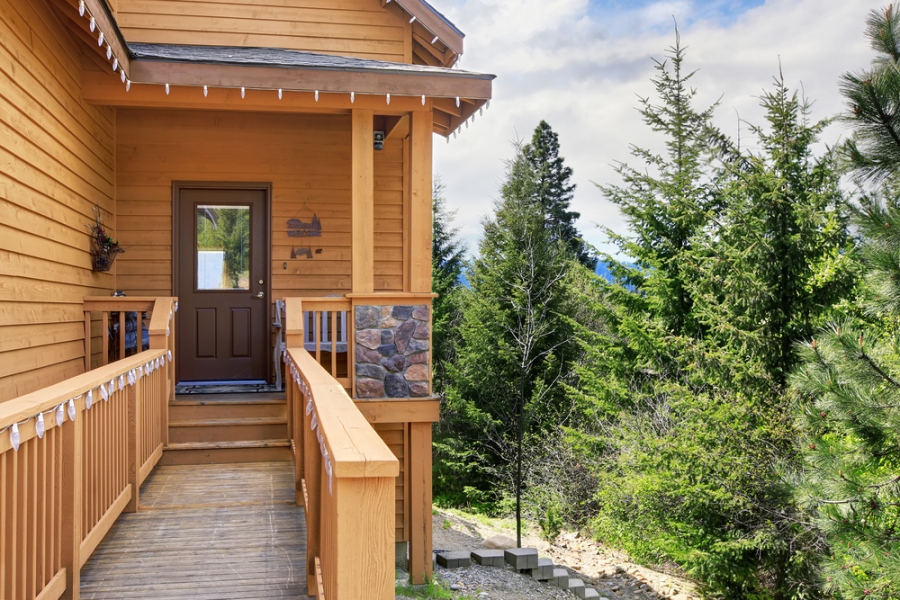Composite cladding has steadily grown in popularity over the last several decades, buoyed in large part by its superiority to wood products used for decking, boardwalks, and even fencing.
Applications where traditional wood is near the ground and exposed to constant humidity tend to accelerate wood rot, pest infestations, and splintering. The amount of maintenance required to contend with constant moisture issues (including mildew, mold, and re-sealing or re-painting) is exasperating to many homeowners, which explains the surging popularity of composites.
Composite attributes that work well for decking and fencing also apply to siding. As this technology steadily advances, composite cladding systems are becoming more and more durable and aesthetically pleasing, giving homeowners a wide range of extremely low-maintenance options.
Painting and staining
Wood siding needs to be maintained on a stringent schedule of repainting or restaining every few years, depending on the quality of paint or stain used. This isn’t just about appearance; wood will crack and split over time as repeated hot/cold and wet/dry cycles break it down.
Composite cladding is offered with an extremely durable heat-treated coating that can stay intact for decades, depending on the product.
Discoloration and fading
Left untreated, wood siding quickly begins turning gray or green as mold and mildew infiltrate the surface. Paints and stains help to prevent this issue, but only last three to five years on average before needing to be redone. Additives in the heat-treated coating for composite decking confer UV resistance and can prevent the color from fading.
Cracking and rot
Even if you stay on top of regular re-painting or staining, wood will show signs of wear over time as it gradually dries out and cracks or remains waterlogged and rots. There are some more expensive varieties of wood like cedar and cypress that are resistant to pests, rot, and degradation, but the elements still take their toll.
Composites do contain wood filler (along with resins and other additives) that prevent delamination, creating a board that can look like new for decades without extensive maintenance.
Warping
Natural variations throughout the trunk of a tree means that a single piece of lumber can have spots with different densities. Over time, this can cause a wooden board to become warped and unsightly. The process of creating a composite board ensures that the density is consistent throughout the structure, so that warping does not occur.
Impact and wind resistance
In addition to wood siding, vinyl is another popular, low cost option used as siding on many homes. Both vinyl panels and wooden lapboard can be broken by impacts from large hail or projectiles from strong winds or athletic neighbors. Smaller wooden shingles are susceptible to blowing off in high winds.
Composites can be scuffed, but are extremely durable against impact, protecting the inner structure from further damage and water infiltration. If you live in an area that routinely experiences severe weather, protecting the inner walls of your home from water damage that often follows high winds can save thousands of dollars in repair costs.
Sustainability
While wood siding products come from the direct harvesting of trees, a percentage of wood composites are from wood dust or chips. Not only do composite cladding products utilize waste products from wood producers and plastics recyclers, the use of composites can slow down consumption of raw lumber products.
By using a product that is more durable and long-lasting, the need for new raw lumber is reduced over time. The use of composite cladding helps to save trees and turns waste that would have entered a landfill in to an attractive, useful building material.
